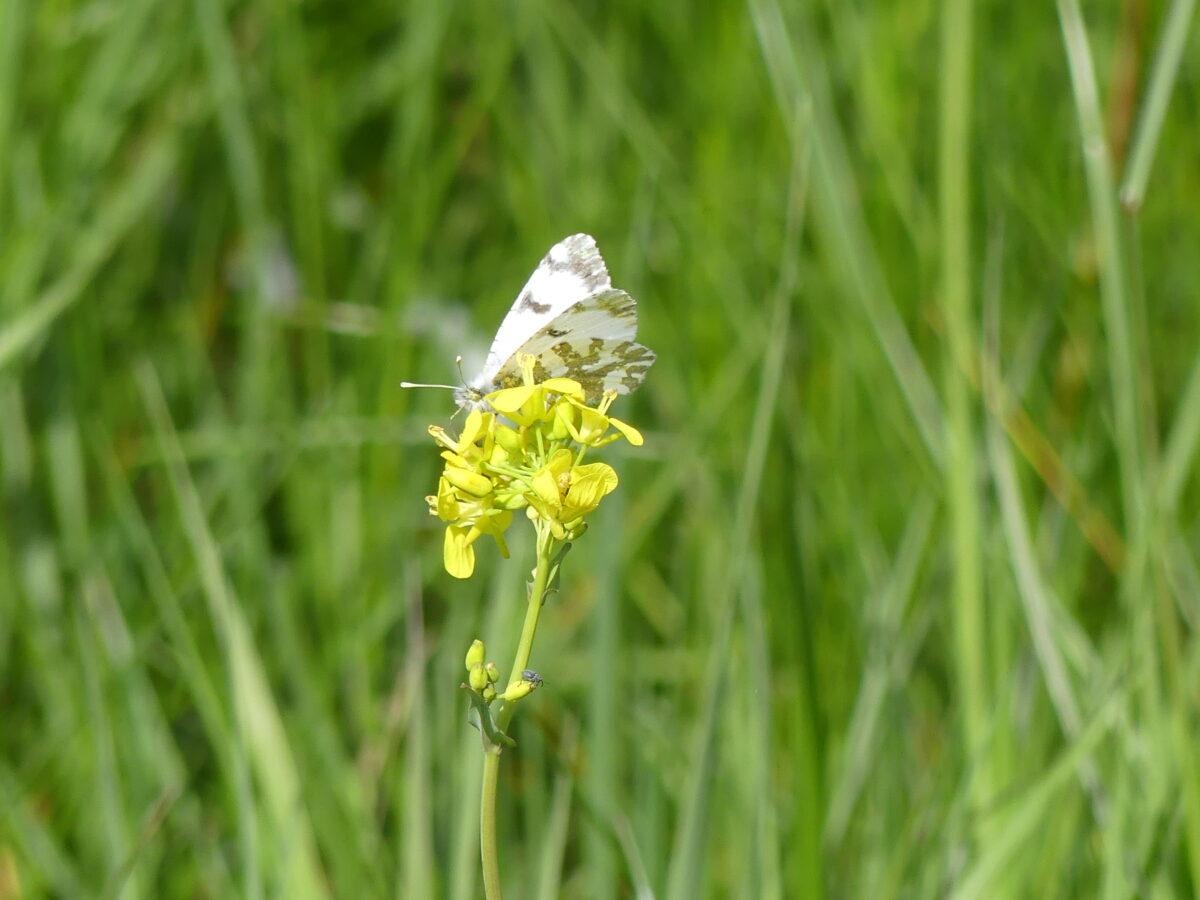
First-ever sighting of an Island Marble Butterfly at SJPT’s Phelps Preserve | Marianne Tynan/Staff archive
Last Friday (May 31, 2024) SJPT Operations Manager (and special projects field assistant) Marianne Tynan discovered and photographed an adult (likely female) Island Marble Butterfly at the Preservation Trust’s Phelps Preserve. This is a very exciting development, as the sighting took place almost three miles (as the butterfly flutters) northwest of this exceedingly rare butterfly’s tenuous population center on the American Camp prairie. This is the farthest north an IMB has been positively identified in recent years, ever since a small population was discovered near the south end of San Juan Island in the late 1990s, when the species was thought to be extinct.
This far-flung adventurer raises so many questions! How did she get all the way to the Phelps Preserve? What route did she take? Is it an individual that emerged from a chrysalis in some other, random field-mustard patch in the valley, perhaps having gone undetected in its earlier stages? Or could it have emerged this spring from another one of our three IMB habitat patches—the Conservation Land Bank’s Frazer Homestead Preserve, where we have seen IMB eggs this year for the fourth year in a row? (So far we’ve found 36 eggs at Frazer, and some have hatched into tiny but very hungry caterpillars!)
What a timely development: Just when we’ve secured a grant to expand our IMB habitat patches at the Phelps Preserve, an adult butterfly shows up, almost as if to say “Yes, this is the place. Keep going!” We now have IMB utilizing two of the three habitat patch areas we have created. This species won’t recover from its endangered status tomorrow, but it is demonstrating that, with a little help, it can and will respond. What we’ve been doing at these patches is working!
Want to see the IMB habitat plots at the Phelps Preserve for yourself? There are still a few places left on our upcoming guided tour, Searching for San Juan Island’s Rare Species, on June 15 (click the link for more info and to register). The tour will also visit a Western Bluebird nesting site, where attendees can learn about (and possibly view) a second rare species that we are working to reestablish in its historic nesting range. Snag a seat on the bus while you still can!
